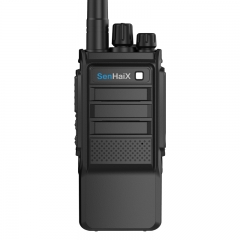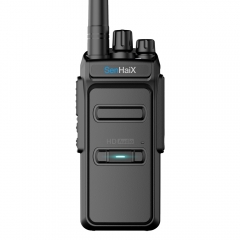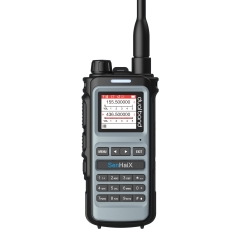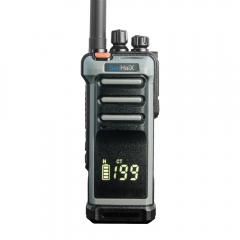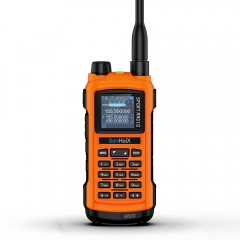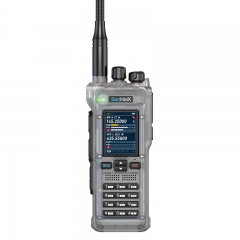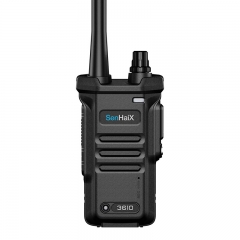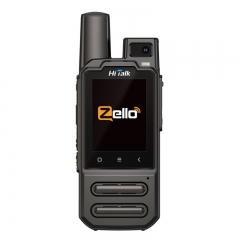Two way radio is mainly used in public security, civil aviation, transportation, water conservancy, railway station, manufacturing, construction, service and other industries, for communication and command and dispatch between group members, to improve the communication efficiency and improve the ability to deal with emergencies. As two way radios enter the civil market, people go out to travel, shopping also began to use more and more two way radios.
The routine maintenance of tow way radio
1. After long-term use of the two way radio, it is easy to get dirty by pressing the key, control knob and housing. Please remove the control knob from the two way radio and clean the housing with neutral lotion (do not use strong corrosive chemicals) and wet cloth. The use of chemicals such as decontamination agents, alcohol, sprays or petroleum preparations may cause damage to the surface and housing of the two way radio.
2. Handle the two way radio gently. Do not move the antenna.
3. If accessories are not applicable, please cover with dustproof cover (if equipped).
Two way radio safety precautions
1. In a car with an airbag, do not place the two way radio within the range that the airbag may be involved when deployed. If the two way radio is in the area that may be involved when the airbag deploys, once the airbag deploys rapidly, the intercom may injure people in the car with great impact.
2. In the atmosphere or occasion of potential explosion, unless the two way radio is specially certified, it must be turned off. In potentially explosive atmospheres, electrical sparks can cause an explosion or fire.
3. Do not replace batteries or charge batteries in potentially explosive atmospheric environments. Installing and removing the battery may cause an explosion.
4. In the vicinity of the blasting area and the area where the detonator is located, the two way radio must be turned off first to avoid possible explosion.
Two way radio operation precautions
1. When the intercom is transmitting, keep the two way radio in a vertical position and keep the microphone 2.5-5cm away from the mouth. The two way radio should be at least 2.5 cm from the head or body at launch. If a handheld radio is carried on the body, the antenna should be at least 2.5 cm away from the body when it is launched.
2, in the process of use do not turn on and off the action for many times, at the same time to adjust the volume to suit your hearing volume.
Precautions for battery use
1. Use original or approved batteries.
2. All batteries may cause damage or personal injury if metallic conductors such as jewelry, keys, or beads touch the bare electrodes of the battery. Be careful with charged batteries, especially when carrying them in pockets, wallets, or other metal containers
3, l'antenna non può essere svitata, altrimenti è facile bruciare il tubo di alimentazione durante la trasmissione.
4. Non utilizzare antenne danneggiate. Potrebbero verificarsi ustioni minori se l'antenna danneggiata entra in contatto con la pelle durante la trasmissione
Precauzioni per l'uso della batteria
1, si prega di utilizzare batterie originali o approvate dall'azienda. 2. Tutte le batterie possono causare danni o lesioni personali se conduttori metallici come gioielli, chiavi o perline toccano gli elettrodi scoperti della batteria. Prestare attenzione alle batterie cariche, soprattutto quando le si trasporta in tasche, portafogli o altri contenitori metallici. 3. La ricarica deve essere effettuata in un ambiente di 5~40 gradi. Se la temperatura supera questo intervallo, la durata della batteria ne risente e la capacità nominale potrebbe essere insufficiente.
Interferenza elettromagnetica/compatibilità elettromagnetica
Per evitare interferenze elettromagnetiche e/o problemi di compatibilità elettromagnetica, spegnere le ricetrasmittenti nei luoghi con cartelli "spegni ricetrasmittenti". Come ospedali o altri ambienti in cui vengono utilizzate attrezzature sanitarie e mediche. Dovresti anche spegnere la radio ricetrasmittente su richiesta durante il volo.
Il funzionamento delle precauzioni radio bidirezionali
1. Quando la radio ricetrasmittente sta trasmettendo, tenere la radio ricetrasmittente in posizione verticale e tenere il microfono a 2,5-5 cm di distanza dalla bocca. La radio ricetrasmittente dovrebbe trovarsi ad almeno 2,5 cm dalla testa o dal corpo al momento del lancio. Se una radio portatile viene portata sul corpo, l'antenna deve trovarsi ad almeno 2,5 cm di distanza dal corpo quando viene lanciata.
2, nel processo di utilizzo non attivare e disattivare l'azione per molte volte, allo stesso tempo per regolare il volume in base al volume dell'udito.



















